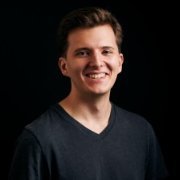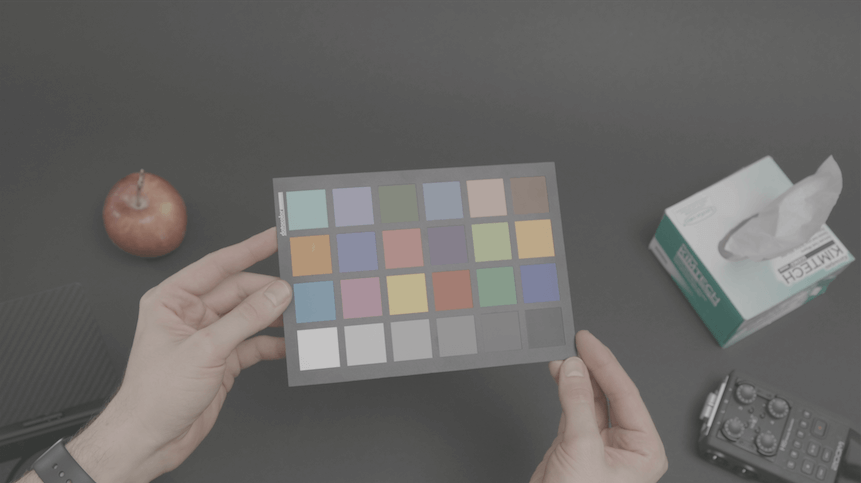-
Posts
21 -
Joined
-
Last visited
About Evan A Olson
- Birthday May 19
Profile Information
-
Occupation
Cinematographer
-
Location
Portland, OR
Contact Methods
-
Website URL
http://evanaolson.com
Recent Profile Visitors
1,825 profile views
-
I just picked up a Sony F55 without the v mount battery plate. I have adapters with 4-pin xlr to make the camera work, but it sure would be nice to have the native v mount adapter on the back of the camera. Do you have one of these? I would also consider one of the recording units if a fair price as those also have v mounts on the back. Thank you!
-
I'm in Portland, Oregon.
-
I have a Sony PMW-F3 that I'm hoping to get more out of with a recording monitor like the Pix-E5. After looking at Atomos and Blackmagic Design recorders, and testing a few of them, they all seem a little heavier, less durable, and lighter on the recording options compared to the Pix-E5.
-
Does anybody have any information on the black version of the Canon L2? It's a Hi8 camera from 1994. I've been collecting lots of info on the white version of the camera but have so far come up empty on anything about the black version. I have a hunch it was some kind of non-consumer broadcast model, but then again it was a prosumer camera. Curious to know if someone's got an answer.
-
All set here. A member reached out and we coordinated meeting up. Excited to use it!
-
I've heard many great things about this camera, but haven't seen much footage online and want to give it a try.
-
Evan A Olson changed their profile photo
-
When it's time to white balance a camera, my current workflow is like this: Place Datacolor Spyder Checkr 24 in front of the camera in a location that receives an even amount of light from the lights. Enable the LUT if shooting log on my SmallHD. Open RGB waveforms (with settings enabled to prevent it from ignoring the LUT) and zoom into the large gray patch. Increase light intensity or adjust camera settings to raise the IRE of the large gray patch to just under 50 IRE (there is no 40 IRE marker). Align the blue/yellow and then the pink/green horizontal lines until that gray patch is a solid white line. Flip the color chart over and capture a short clip of the color tiles. In Resolve, apply a LUT node and then add a Datacolor correction node after the LUT node to match the color tiles. Every time that I do this, the image comes out way too dark. I fix this by pulling in clips from shows and commercials I like and comparing IRE levels to those clips. Datacolor's tutorials and manuals are frustratingly obfuscated for no particular reason. They say "match to 18% gray" but don't show which color tile is the 18% gray tile. I feel like I should have learned this in school, but all they taught was "point it at a gray square and hit auto." That never works right. Questions What am I doing wrong with exposure and the color chart? How can I improve on this? I use a light meter to figure out ratios (2:1 background, 3:1 face, etc.), but I'm in the dark as to how to connect those ratios to my camera. How do you use your light meter with a color chart? Here is a sample log file: https://www.dropbox.com/s/iqt1ny9wbedinec/Color test - original log.MOV?dl=0 And here is what it comes out to when following the 7 steps above: https://www.dropbox.com/s/tt6gn5vi5643qxa/Color test - rec709.mov?dl=0
-
- 1
-

-
Zoom H6 has 4 XLR inputs, incredible battery life (two 10-hour days compared to 1-2 hours on the Zoom H4), and a user friendly OS. The limiter, though, is its... limitation. It is nothing like the limiter on a Sound Devices mixer, and you will from time to time clip audio. The MixPre 3 II from Sound Devices is $300 more than the H6 and well worth the extra money. It sounds better, has an amazing limiter, and the build quality will keep it around.
-

Shoulder / chest support...what do you recommend?
Evan A Olson replied to Daniel D. Teoli Jr.'s topic in General Discussion
Maybe a shoulder rig if you don’t have one? Rests on your shoulders and gives you one hand for support and the other for follow focus. Smoother than handheld. Not bulky. One with side handle arms on those rosettes. SmallRig and LanParte are not crazy expensive for a system like this. Not a lot of risks buying used either. -
This morning I saw a video related to this. Newton Thomas Siegel explains how he uses different focal lengths to get different emotions across. A wide angle up close is generally more intimate with the viewer while a telephoto is more voyeuristic and disconnected. A clean medium shot of a character in conversation with another, OTS style (clean not dirty), if shot on a wide angle lens, will exaggerate the sense of space between the two characters. The style of the wide angle enhances the separation that a normal lenses wouldn’t get across. A telephoto lens could be used to show 2 characters, who are standing far apart, as the same size on the screen (with telephoto compression and all that).
-
All 3 of the below micro four thirds cameras have the same sensor and mount type. Pros and cons are listed. They are all very small. Panasonic GH5S - Pros: Weather sealed and most reliable, low noise image, great battery life, fast menus, and takes photos if needed as well - Cons: Color takes work, not the greatest dynamic range, no ProRes internally Black Magic Pocket Cinema Camera 4K - Pros: ProRes internally, raw footage, fast menus, nice color straight out of camera, decent dynamic range - Cons: Battery life is awful (20-30 minutes per battery), software is buggy, focus peaking is not good Z Cam E2 - Pros: ProRes internally, 4K 120fps H.265, great color, accepts Sony NP batteries, good dynamic range, and has very good battery life - Cons: New company with unproven track record (seems to have good customer service?), is just a brain to start The BMPCC4K and Z Cam have the high-end look that you're going for. And the GH5S is just a solid, reliable option. I'd be comfortable using a GH5S without a backup, where with a BMPCC4K with its bugs and the Z Cam with its unproven record, I'd be sweating. These are just the cameras that came to mind from my experience. Other people could have completely different opinions about these cameras. I'm curious to know what other people think. Last thought... If you're talking about a camera that can literally fit in your pocket, then maybe a Sony Cybershot RX100 VII? The new one can shoot supersampled 4k in log and output a 422 signal (funny thing that this little camera can do that while Sony's other cameras can't). They also claim 14 stops of dynamic range if shot with S-Log 2.
-

What are your thoughts on renting out your cine camera?
Evan A Olson replied to Evan A Olson's topic in General Discussion
This is such a hard question. "What's the vacuum in your market that you can fill?" I think the biggest issue for me is location. It's easy to find people who work "locally" in Connecticut out of Boston or NYC. Cameras, lenses, grip trucks, whatever are mostly out of the state. Will definitely have to think more about this.- 17 replies
-
- camera rental
- renting
-
(and 2 more)
Tagged with:
-

What are your thoughts on renting out your cine camera?
Evan A Olson replied to Evan A Olson's topic in General Discussion
Hmm. I looked into this just now. It definitely has a cost factor to it. Base models for 1080p at 1k fps start at $29,000. To get 4k, the cost approaches $100,000. Maybe someday. The Z-Cam E2 can do 160 fps at 4k and 240 fps at 1080p for around $2000. Footage is pretty clean, too. Maybe a good start.- 17 replies
-
- camera rental
- renting
-
(and 2 more)
Tagged with:
-

What are your thoughts on renting out your cine camera?
Evan A Olson replied to Evan A Olson's topic in General Discussion
Thank you, Tyler. Responses like these are the reason why I joined this forum. This is so helpful for me, and I hope your response will be helpful for other members later on. I don't live in a media town, so Sharegrid and the general occasional email with "We need a camera for an indie pilot of a TV show that we're going to pitch to networks" as its gist are what comes through. Theft is also a concern... I do know a rental house in Boston that rents out other peoples kits for a percent of the daily rate. Based on what you said, if I do end up getting a camera, that might be the route. It's a bummer because I'll be in CT for another 2 years right in the middle between NYC and Boston. Oh, and with damaged rentals? Someone I know rented a set of Sigma cine lenses for an industrial type shoot. He got the camera/lens too close to I think a saw blade cutting through stone. Some of those stone fragments chipped the lens glass.- 17 replies
-
- camera rental
- renting
-
(and 2 more)
Tagged with:
-

What are your thoughts on renting out your cine camera?
Evan A Olson replied to Evan A Olson's topic in General Discussion
Everyone always needs an extra light. Or that one flag to give a little negative fill. A few months ago, I bought an Aputure 120D II with a bunch of Bowens light modifiers. That light has given me so much value. Interviews before and after that light are like night and day. Before I was using a 2-panel setup through a silk-type cloth. With the 120D, I just put on a 48" beauty dish to get great soft and controllable light. A new camera couldn't have made the shots before the light look any better.- 17 replies
-
- camera rental
- renting
-
(and 2 more)
Tagged with:






